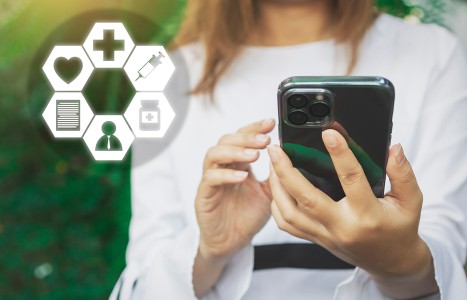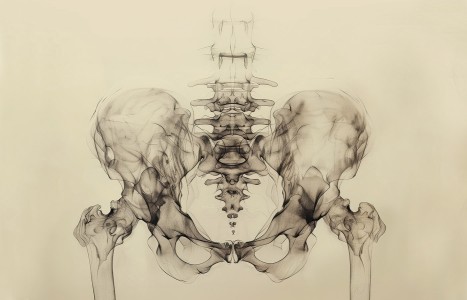People today want convenience, whether it be from their bank, credit card, favorite retail store, or restaurant. They demand it from the companies who hold their loyalty, including their health care providers (you). They don’t want to call and possibly be put on hold, and they want to use an app or schedule an appointment on your website. Here are three reasons your practice can gain by switching to online appointment scheduling.
Adventures With the Pericardium
My previous column on the San Jiao deserves equal time for SJ's loving partner, the pericardium. I nicknamed SJ the travel meridian – but pericardium can also play a crucial role in air travel.
WONDERPOINTS
P6 and P8 work wonders to calm flight fears on lift off and descent. Held simultaneously, they also help to calm in-flight jitters, or those bumpy moments when you hit air pockets or turbulence. P6 and P8 require hardly any pressure at all. Let the thumb and middle finger of the opposite hand float down onto those points like a butterfly. I really felt the value of this technique when a fellow traveler started to have a meltdown during one transatlantic lift-off recently. I did not know him, but encouraged him to place his hand palm up on the armrest, so I could access P6 and P8. He settled down instantly. He was curious to know more about the points and our discussion provided the perfect distraction. I teach these wonder points to RNs, MDs and PTs to help calm a nervous or troubled patient. P6 and P8 can be accessed in such a subtle way. They are easy to integrate with a reassuring touch or during pulse taking.
Everyone I straw polled for this article came up with a different spin on P6 and P8 – without any prompting. Janet Cook, LAc of Austin, who integrates Shiatsu with her acupuncture practice, finds acupressure of P8 helps modify hand and arm tremors in a patient experiencing Louis Body, which she adds, "is very similar to Parkinsons Disease, yet with a higher rate of incidence and progression of dementia." She has also found P6 "often yields a less wiry pulse" and has a calming effect on patients experiencing stress, even in extreme cases among refugees who have escaped war trauma and violence.
Isabelle Chen-Angliker, MD (Switzerland), LAc, who practices integrative medicine and ABT in Austin, said, "Since a majority of my clients struggle with mood and/or sleep disorders, P6 is essential in my treatment approach." In cases where wood overacts on earth prompting indigestion/acid reflux, she finds P6 invaluable. When she needles P6 on herself, especially on her dominant right wrist, it's "like lightning," all the way to her fingertips.
Donald Lefeber LAc, director of integrative healthcare at the Community Medical Foundation for Patient Safety in Bellaire, Texas, finds pericardium – and especially P6 – very effective when treating menstrual disorders like amenorrhea and irregularities.
My longtime Shiatsu colleague Yolanda Asher AOBTA-CI of Atlanta, shared a charming story about P6 and P8. Picture her in a car driven by a friend at top speed when the friend's ten year old daughter Alex* suddenly announced she felt nauseous. Yola quietly reached over and held Alex's P6 and P8. Within seconds Alex said, "This is creepy. I feel better!"
DIVORCE MERIDIAN
Whenever I sense a vulnerability – or deficient qi - in the pericardium during Hara assessment, my first question might be, "Relationship problems?" If a separation is imminent or recent, the pericardium takes a hard hit. I'd say 9 times out of 10, my question is spot on.
I remember a client in New York who requested a house call. We dragged a small futon from one room to the next to try and find a comfortable spot on the floor. Each time we settled down for the session, she would say, "I feel a draft" or "This isn't good," or "Too much light," or "not enough light" or "too chilly" or "not enough air." I opened and closed windows, blocked drafts under doors, turned lights on and off to no avail. On this went until she crawled under a huge old fashioned wooden desk (filing cabinets on either side). She felt safe there, like a dog in a kennel. Yes, she was going through a divorce. She needed that protective space. So I crawled under the desk too, and actually managed to give a full Shiatsu session in that cramped cove. I wasn't surprised to feel the vulnerability in her pericardium – and in her SJ!
I explained the balancing effect of the P and the SJ working in tandem in that specific moment. The pericardium was protecting her heart, while the SJ, as her body's barometer, needed a boost to be able shield her against drafts or chills. It would also help her adapt to the changes she was experiencing in her life.
Everything made perfect sense. Unsurprisingly, she was experiencing insomnia, which also hits the pericardium. I offered some tips. As her husband had left her in the apartment they shared for years, I suggested it might be helpful for her to move out of the master bedroom and convert the tiny spare room into a den. A cozier bed, colorful scatter cushions, her books, music and favorite paintings perhaps?
ENHANCE CIRCULATION
Accessing potent Ren 17 (Front Mu Point for pericardium) is a wonderful way of enhancing upper body circulation – and easing respiratory congestion. As a breast cancer survivor, I also found this point invaluable as a sort of mini launching pad for specific stretches I teach widely for post mastectomy – and also -for general breast health.
Hands back to back, I place my fingertips in Ren 17 to energize the point, then stretch both hands to the front, palm facing palm, and then, spread my arms to the side in a slow, tai chi like movement and lean back slightly, arms in full extension to "widen the smile" across my scar. After opening my arms as far as possible, I hold the position, feeling as though I could squeeze a tennis ball between my right and left scapula. I bring my fingertips back into Ren 17 again. A great exercise – not just post mastectomy, but helpful for any upper body stiffness or discomfort, good generally for breast health, and of course a marvelous stretch for the pericardium meridians in the arms.
References:
- Ferguson, Pamela: TAKE FIVE – The Five Elements Guide to Health and Harmony, Gill & Macmillan 2000.


